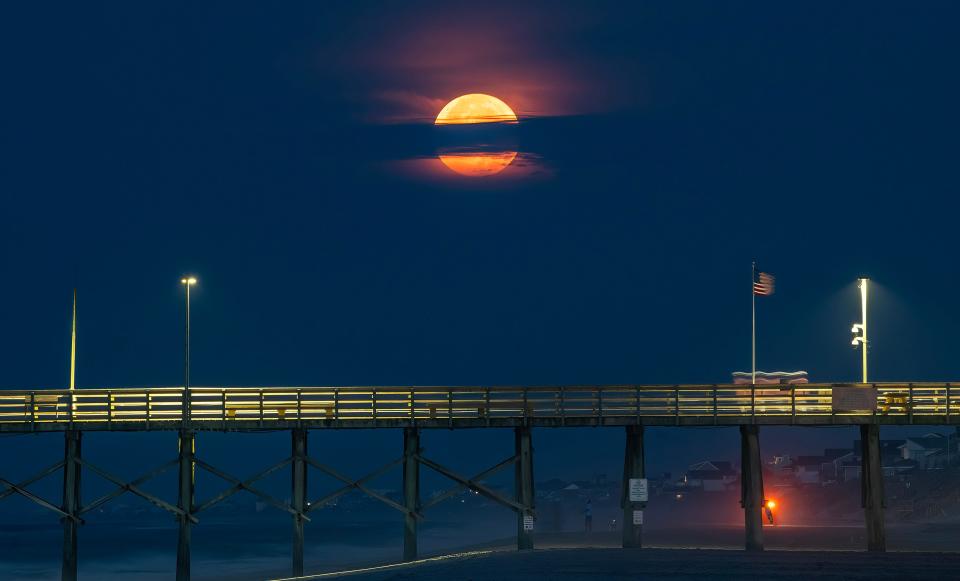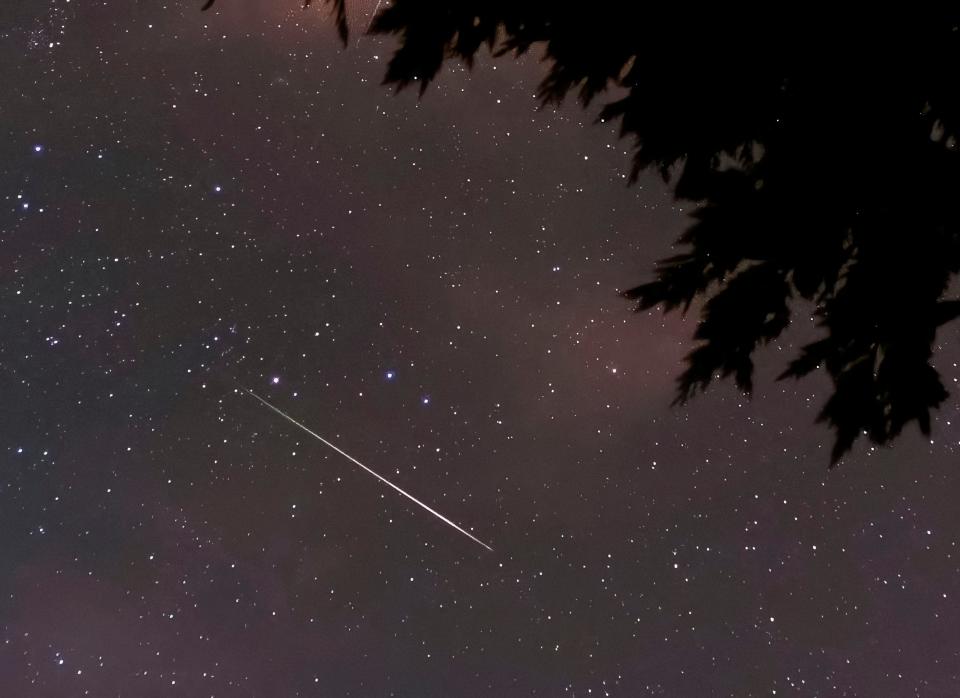Backyard Universe: How to see two full moons and meteors in between in Fayetteville in August
Astronomers generally don’t like the term “supermoon.”
That’s probably because the super description was first used by an astrologer and not someone who conveys astronomy as a science. The term first showed up in the media around the late '70s.
It’s meant to describe a full moon that happens when Earth and the moon are closest together, making the moon appear up to 14% bigger and 30% brighter than a more distant full moon. The difference is subtle however and most folks taking a causal glance can’t tell the difference.
I figure it’s a column-worthy topic though, if for no other reason than it will get folks outside at night looking at the sky with that ever-so-slightly slightly bigger-looking moon. They may then notice other night sky objects that will make them more curious about astronomy. That is, if it’s not super cloudy on the nights of the full supermoon.
To make matters worse for those who cringe at the “supermoon” tag, we’re about to have two of them in the same month.
August brings two “supermoons,” that is two full moons that are separated from Earth by at least 90% of the closest Earth-moon distance. The first happens on August 1 and the second one on August 30. We just had a previous supermoon on July 3 and have yet another one on Sept. 29. I guess we’re experiencing the “summer of the supermoons."
Super or not, we have a full moon every 29-1/2 days so months with 30 or 31 days can have two full moons in the same calendar month if the first one falls around the first or second day of the month.

Blue super moon
One other name assigned to that second full moon in the same calendar month is also a mostly non-scientific term.
It’s called a “blue moon”
A blue moon happens on average about every 2.7 years. I’ve never seen or heard about an observation of one that reported the moon as being a blue color. The term, in this case, is taken to mean “very rarely” as in “once in a blue moon.”
So if we assign both bizarre names to the August 30 full moon it will be known as the “super blue moon” of 2023. It will also be the “most super” of the four super moons in July, August and September because it will be the closest one of the four full moons during those months. Also, the planet Saturn will appear close to the upper right of the rising full moon on Aug. 30.

Perseid meteors to fly
The best thing about the two August full moons is that both appear at the beginning and the end of the month.
That means the new moon phase, when the moon is least bright, happens in mid-August around the time of the Perseid meteor shower. Meteors are bits of rock and dust that are left in the wake of comets and sometimes the Earth passes through this stream of particles. The particles, moving around 40 miles per second, hit our atmosphere about 60 miles high and instantly burn up, appearing as a brief streak of light.
Last year, a bright over 90% full moon in the sky after midnight washed out fainter Perseid meteors. That’s when the Perseid shower is most active, between midnight and dawn. You won’t notice many Perseid meteors in the early evening.
This year, in the predawn hours of Sunday, Aug. 13 when the shower peaks, the moon will be a slim waning crescent and won’t rise until just before dawn.
But just a moonless sky doesn’t spell success if you’re looking to observe the meteor shower early on Aug.13.
The sky has to be clear. You’ll also need a site far from city lights and where you can see most of the sky.
Perseid meteors appear to radiate from the constellation Perseus which will be rising around 11 p.m. but will appear high overhead at dawn. Although the shower’s radiant is where the Perseid meteors appear to be coming from, they can appear anywhere in the sky at any time.
A clear moonless night from a dark rural site with no sky obstructions and watching between midnight and dawn will always yield the highest number of observed meteors. If we skimp on any of those factors, the number of meteors seen can drop dramatically.
Oh, and it’s best to always be looking up during a meteor shower and not glancing downward or to the side. That can result in missing a nice meteor … speaking from experience.
The thing about the August Perseid shower is that even if conditions are ideal at your site, mosquitoes may outnumber and meteors you may see, so be sure and take along bug spray in addition to a ground blanket or reclining chair.
The Perseids and the December Geminid meteor shower are considered the most active of all annual meteor showers throughout the year. If the predawn Aug. 13 sky is cloudy but the same times on Aug. 12 or 14 are clear, you can see some Perseid meteors then, too. The shower slowly ramps up and down after the peak date.
If you have a question about astronomy, send it to Backyard Universe, P.O. Box 297, Stedman, NC 28391 or email johnnyhorne937@gmail.com
This article originally appeared on The Fayetteville Observer: August brings two full moons and meteors in between

